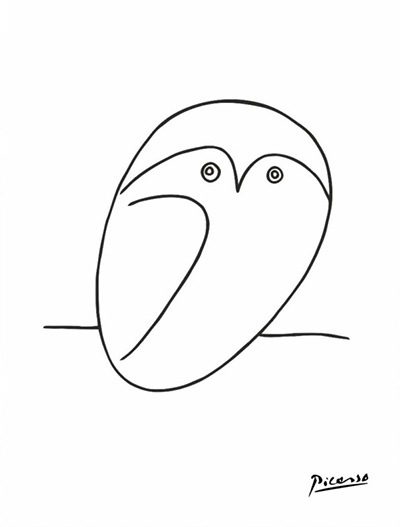Picasso is sitting in the park, sketching. A woman walks by, recognizes him, runs up to him and pleads with him to draw her portrait. He’s in a good mood, so he agrees and starts sketching. A few minutes later, he hands her the portrait. The lady is ecstatic, she gushes about how wonderfully it captures the very essence of her character, what beautiful, beautiful work it is, and asks how much she owes him.
“$5,000, madam,” says Picasso. The lady is taken aback, outraged, and asks how that’s even possible given it only took him 5 minutes. Picasso looks up and, without missing a beat, says: “No, madam, it took me my whole life.”
Mastery takes time. It’s not as simple as quickly picking up a skill here or some new knowledge there. Mastery involves effort, intention, and discipline. It is something we often overlook, but mastery holds value well beyond the surface.
Of course, there are versions of mastery too. Striving to become the best in the world is one thing, trying to be pretty damn good is quite another.
In the world today, as life gets more complex and complicated, as knowledge grows unabated and technology pushes limits, all we can do is keep up. Mastering a skill to its fullest extent, while admirable, is not what we need. Rather, we need a combination of skills and abilities that can mirror the complexity of what the future holds.
So when we strive for mastery, we don’t need to be the best in the world. That level of understanding isn’t as important as it once was. Today we need to be able to grasp skills well enough to be productive with them, well enough to break rules, well enough to combine them with other skills and ideas. That’s what we’re striving for. Mastery in this context means being in the top 20% of a skill, not the top 1%. It may not sound like much, but it makes a huge difference.
It can take lifetimes to be the best, but to be good, that’s far more accessible and for us, far more practical. That’s not to say it’s any easier. Achieving mastery still takes sacrifice and commitment and hard work. It’s not easy, but I’ve realized that it is formulaic. There’s a clear path towards mastery in anything if one has the discipline to follow through. It consists of three primary stages: attention, acquisition, and ascension.
1. Attention
The first step certainly seems the easiest, but it’s often harder than we realize. Before we do anything we must decide what we are going to spend our time on. What skill or domain are we committing ourselves to master?
We all have many interests and we all are capable of mastering many things, but putting in the time and effort to truly get good at any given skill takes a decision. We must choose what we want to master. There are many ways to come to this decision. It can be based on skills we deem lucrative in the future, it can be based on what we know we’re good at it, or even what we are interested in.
However we choose, the first, essential step is choosing where your attention will be focused.
Once we make this choice, the fun begins.
2. Acquisition
When we know what we want to master, we embark on the journey of acquiring it. This comes through practice, practice, and more practice. The thing is, there are different levels when it comes to practice, which means that all practice isn’t created equal.
When we are trying to practice for mastery, what we are striving for is purposeful practice. Purposeful practice is different from your typical practice in three distinct ways. First, it requires well-defined, specific goals. Often, when we’re trying to learn new things, it’s scattershot at best. We don’t really know what we’re trying to accomplish. Purposeful practice turns this ambiguity on its head. You know exactly what you’re trying to learn at any given time and most importantly, why. This transforms your practice into something meaningful and guided.
The second criteria is direct feedback. It is essential to have feedback when you’re learning anything new, so that you know what you are and aren’t doing right. You can correct bad habits, enforce good ones, and ensure you’re learning in the best way possible. The typical form of this feedback is a teacher, but it can come from anywhere, as long as it can guide you towards doing things the correct way. This means books, instructional videos, peers, mentors, and more can all give you feedback and ensure you’re on the right track.
Finally, purposeful practice requires getting uncomfortable. You need to push outside your comfort zone and practice your weaknesses if you truly want to approach mastery. Far too often, we just retread the things that we’ve already gotten good at because it’s easy and comfortable. Pushing yourself into uncharted territories, facing your weaknesses head-on, that’s what leads to growth.
If you can implement these three criteria for practice, you’ll be well on your way to acquiring the essentials of any skill.
3. Ascension
The point of mastery isn’t simply to get good at what you’re doing. It’s not just about gaining a skill as it is. It’s about taking the next step, embracing what you learn, and pushing it to new heights. You must not only arrive at the level of master, but exceed past it.
The third and final stage of mastery is ascension or going beyond the master. This is where creativity and innovation come into play. This is where other skills and ideas enter the fold. It is the culmination of what you know and what you can now do.
The opportunities available to a master at this step are boundless and open to experimentation and innovation. Ultimately, the master is striving to surpass what has already been done, whether by the teacher or in the field itself. Often this comes from the combination of skills, which creates something truly unique.
Ascension is the pinnacle of mastery.
The bridge between knowledge and skill is practice. The bridge between skill and mastery is time.Jim Bouchard
Mastery is a long path, but it’s certainly a worthwhile one. While all the practice and long hours are challenging, it also reaps rewards.
Mastery gives you an identity in a world, where one is often uncertain. It offers meaning in your life, when it can often be lacking. It commands respect from peers and outsiders alike. It allows for expression of ideas and insights. It develops discipline and willpower. Most importantly, it teaches you how to master something in itself. A lesson that can be used repeatedly throughout life.
This is the ultimate lesson. To be able to master things, when required.
The world is becoming increasingly complex, moving ever faster. To be able to call on mastery when you need it is a powerful ability that serves us well in the face of coming and constant changes.
While a single skill is not the answer for tomorrow, the ability to master things is. We should all pursue mastery to prepare for the future, as the lessons it provides are not found anywhere else.
